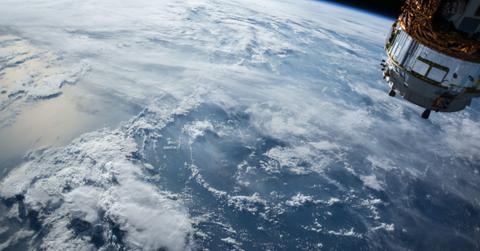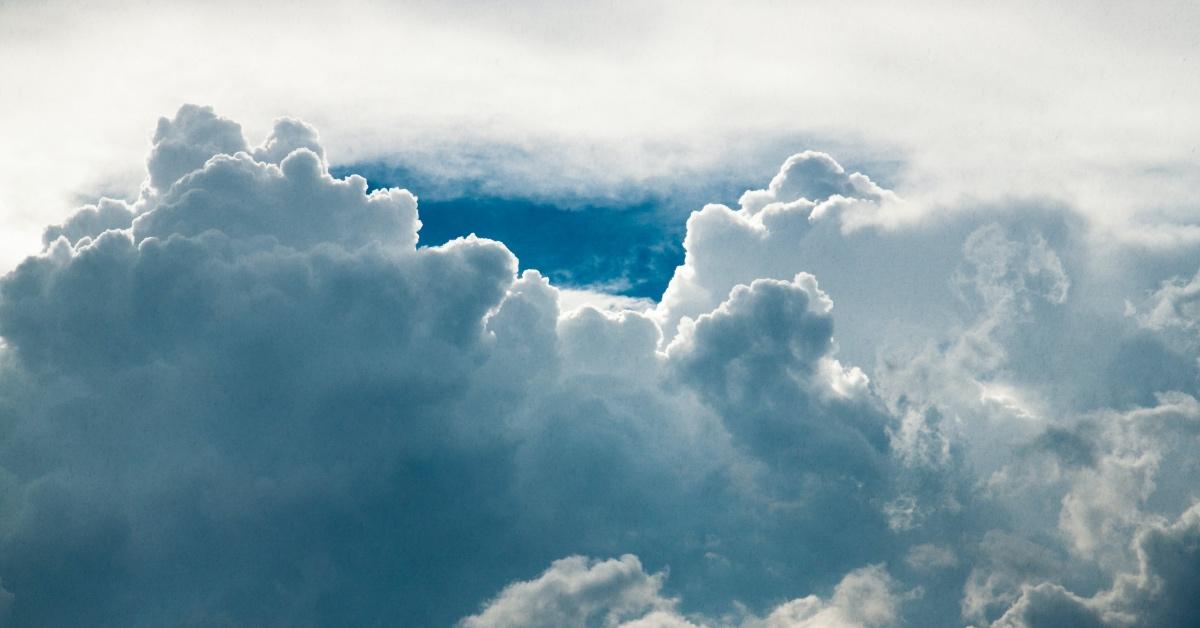Are Atmospheric Rivers Actual Streams of Water in the Sky?
An atmospheric river is a stream of water vapor that's collected from warmer regions like the tropics and carried by wind in the atmosphere.
Oct. 26 2021, Published 6:44 a.m. ET

The world has experienced a mix of ups and downs in terms of weather over the past few years. Californians are constantly battling wildfires, Louisiana continues its fight against constant hurricanes, and now the western part of the U.S. must brace for more severe atmospheric rivers.
What is an atmospheric river? Is it a new phenomenon, and what happens when one occurs? Get answers to these questions and others right here.
What is an atmospheric river?

Is it a river in the sky? Perhaps. The National Oceanic and Atmospheric Administration (NOAA) defines an atmospheric river as a “relatively long, narrow region in the tmosphere—like rivers in the sky—that transport most of the water vapor outside of [tropical regions].”
Atmospheric rivers essentially collect moisture from warm regions, allow it to be carried by strong winds, and later release it over cooler areas.
The Scripps Institution of Oceanography says these streams of concentrated water vapor, “each carrying more than twice the amount of water that is carried by the Amazon River,” may be released as rain or snow, depending on where landfall is made.
Are atmospheric rivers a new phenomenon?
Not quite. They’ve been around for years and actually play a critical role in the water supply. Atmospheric rivers are also “responsible for half of California’s annual precipitation.” Atmospheric rivers, sometimes referred to as plumes of moisture, are rather large in size. They reportedly stretch “thousands of miles long and hundreds of miles wide.”
What happens during an atmospheric river?
When an atmospheric river moves with the weather and makes landfall, it generally leads to precipitation. In some cases, this might mean severe flooding, and in others, it may just be a typical rainstorm if the system is weak.
Californians recently experienced a more severe atmospheric river that prompted officials to issue evacuation orders for parts of San Mateo County and an area in San Francisco. The atmospheric river acted as a “fire hose,” sending out heavy rain and wind, and even snow in the Sierra Nevada. A landslide was also reported in Plumas County.
How common are atmospheric rivers?
Atmospheric rivers are “present somewhere on the Earth at any given time.” Research conducted by the NOAA also showed that between 1997 and 2016, an atmospheric river impacted the California coast on 217 days.
Sean Miller, a meteorologist for the Weather Service in Monterey, Calif., said Californians tend to experience weather sent out by atmospheric rivers in December and January. He also stated that the most recent disaster the Golden State experienced involving the convergence of a bomb cyclone and atmospheric river was “anomalous.”
Although atmospheric rivers can be detected, they're often unpredictable. Sometimes, they make landfall hundreds of miles from the West Coast, even when predictions say otherwise. The amount of rainfall an area might experience can also be difficult to determine.
How does climate change affect atmospheric rivers?
Researchers say atmospheric rivers are “stable” for now, although this could change as a result of climate change. They predict that, in future decades, “atmospheric rivers could drastically increase extreme precipitation events in some parts of the world” due to changes in climate.
According to Yale researchers Seung Hun Baek and Juan Lora, the rise in greenhouse gas emissions is “expected to continue to outpace aerosols,” which will lead to the “intensification of atmospheric river-induced precipitation by about 20 millimeters per month. While research shows atmospheric rivers often benefit our land by providing precipitation to dryer areas, these natural phenomena also pose a risk of severe flooding and other disasters.
